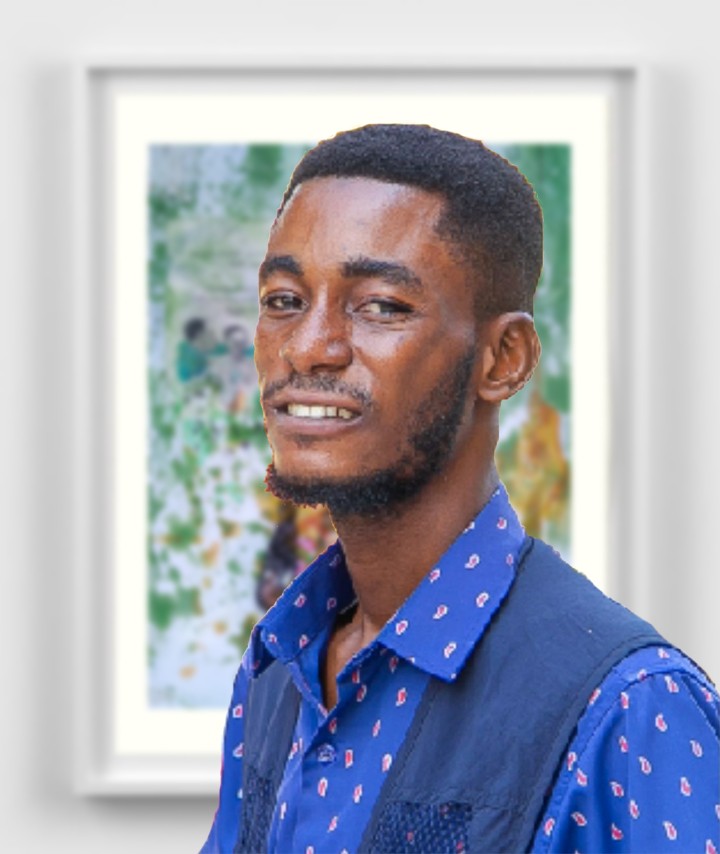We recently connected with Michael Ansong and have shared our conversation below.
Michael , thank you so much for taking the time to share your lessons learned with us and we’re sure your wisdom will help many. So, one question that comes up often and that we’re hoping you can shed some light on is keeping creativity alive over long stretches – how do you keep your creativity alive?
Creativity to me as an artist is turning what had already been painted upside down. It is a word that rebrands itself into something new with a distinct narrative. An example of creativity in action is when artist Damien Hirst recreated the concept of a pharmacy and what it means to enter one when in need of medication. The installation took up an entire room and featured rows of medical cabinets with packaged drugs behind glass sheets, exactly like a typical pharmacy. His same work called pharmacy was too similar to the work of Joseph Cornell’s Pharmacy in 1943, which also displays bottles within cabinet. In view of these historical context of creativity within and around art, am inspired to relook into what had already become mundane within my immediate space. I have always been an artist who is mostly fascinated by images making, looking at how images could be rebirth through stains on rugs, napkins, doormats even on walls, like layering of colours on facades, and rethinking of how these materials and spaces could be aged because of the context and narratives surrounding them. So, as I travel around the suburbs of Accra, I take a lot of pictures of these kinds of spaces, bring them into my studios, and then use these pictures to expand on my painting, drawing, screen printing, and image transfer processes. Being an artist in Accra provides me with daily inspiration in the form of intriguing images and work titles. In this way, creativity to me has evolved into something that exists on a daily basis, like having a project title borrowed from a town that I visited called “Yellow Signboard” .
Great, so let’s take a few minutes and cover your story. What should folks know about you and what you do?
My name is Michael Ansong Sarfo I am an artist from Ghana who works and lives in Accra. I received my bachelor’s degree in Painting from Kwame Nkrumah University of Science and Technology – Kumasi, Ghana in 2021. I had worked and assisted artist in their studios and residencies like Yaw Owusu, Caleb Kwarteng Prah and Priscilla Kennedy. My Practice, spans across the disciplines of painting, drawing, printing and installations. I am an artist who is always fascinated about characters, narratives, and layers of histories within familiar materials such as napkins, tablecloth, rugs, doormats, wooden tables and among others – characters like those left with stains, burns dirt and even patterns and designs within these materials, and how I could rethink of these narratives into image making process. I intervene on the histories by recapturing these narratives into screen-printing techniques, painting and drawing. Thinking and visualizing of histories and memories, I also recapture characters from archival photographs and layers of colours on facades like billboards, walls and car bodies from spaces in Accra suburb, where I live. I blend the histories from the napkins, tablecloth and rugs with the archival photographs and layers of colours on facades because I see these narratives to be the same, however have a shared historical context due to aging processes like having interesting colours on it surfaces as it is aging.
I am also looking at image editing, like cropping, and copy and paste systems on Photoshop application, thus the idea of post-production where images existing in different contextual spaces could be restaged into a single photograph after various editing processes. Therefore, I see my works that am creating as works that have gone into such processes this time around manually and not Photoshop made.
I have been working on new projects and series such as Call to glory series, Twelve disciples, and Yellow Signboard Projects
Looking back, what do you think were the three qualities, skills, or areas of knowledge that were most impactful in your journey? What advice do you have for folks who are early in their journey in terms of how they can best develop or improve on these?
The most major qualities that have helped me in my career journey is firstly, Going back to relearn and unlearn from my predecessors. Some things remained difficult for me even after I graduated from college as an emerging artist. These included knowing when and how to show your work so that the public can see it, creating pieces that galleries and collectors would be interested in, and holding certain beliefs about what art is and should be. For example, you have to be trained as an artist before you can work as a practicing artist, and a certain class of people creates art. These were false beliefs that I had to relearn after spending some time in Caleb Prah’s studios learning about his processes of thought and action within his artistic career. Second, being consistent and strong in my ideas. Growing up, as an artist, I observed that there was a lack of experimentation and dissemination of ideas in the art form. This makes it extremely difficult for your audience to follow your work and truly comprehend what you are doing and where you are taking it. Nevertheless, I was aware of these characteristics and had one subject expanded into several forms in the artistic career, such as painting, printing, and drawing. Adhering to a single concept develops your mental models and lets your audience accompany you on your journey. This has been a particularly important aspect of my artistic development.
Finally, I will say, being passionate to attempt to fail. In my opinion, failing is defined as producing things that have a high chance of failing, particularly when an idea has never been tried before. Still, you give it another shot, fail again, and get better at failing.
In my creative methods, I have always loved testing out ideas as soon as they come to me. However, once those ideas land on the canvas, I see them as ideas that would have failed if I had not put them to the test.
I experiment with different techniques during the testing process, such as working with vegetable oil and combining acrylic with it. This becomes quite laborious when controlling the acrylics, but it allows me to hear its voice as these ideas are painted on the canvas. I really enjoy working on these processes without knowing how they will turn out, and these ideas develop into new bodies of work that I may show to the public because I am passionate about trying to fail even in the process of experimentation.
For you to be a well-known artist and for future generations to consider you among the greatest artists of all time, on pace with Picasso and Van Gogh, Discover what you truly enjoy doing by listening to your inner self. Then, begin exploring those concepts in the mediums of painting, drawing, sculpture, textiles, music, and other artistic endeavours. Additionally, you should pick a single theme, create a piece of art around it, and then repeat the process so that your audience can track your development as an artist and your creative process as it unfolds every day.
Lastly, as I previously discussed, you should be excited and determined to try failing since it will offer doors for you to experiment creatively and further your artistic career.
Looking back over the past 12 months or so, what do you think has been your biggest area of improvement or growth?
Helping Priscilla Kennedy, an artist based in Ghana and a part of the blaxTARLINES community in Kumasi, with her exhibition “Buried in Plain sight – A Ghostly Xitation” is my choice. BlaxTARLINES is pushing the boundaries of art through the emancipation of art and human freedom, much like Marcus Garvey did during the post-colonial era. Kennedy is an artist who uses everyday materials including paper, beads, clocks, and kente-woven cloth. She incorporates her body as the subject of the figures in her artistic processes, challenging the politics surrounding the portrayal of the female figure in art history while also examining the cartographical journey that the female body had travelled through over time. As a result, I saw some similarities between Kennedy’s work and mine as an artist who also investigates histories surrounding everyday materials like napkins. However, it was during my assistance with Kennedy’s exhibition that I realised my thought processes had grown and developed into something intriguing, providing further examples of how materials could be intervened in historical representation. In that period of my career, I had the opportunity to lead guests through her exhibition while elucidating her thought processes to the audience. I also shared pictures of my work with gallerists, who in turn shared them with art instructors who travelled to see the show at that time.
The opportunity to see Yaw Owusu’s studios—he is an artist who has shown his work all over the world—will come next. I learned how tiresome it was to get his coins put on a little canvas size during that period by helping him in his studios for the smallest amount of time. Yaw Owusu is another artist that works with currency, namely coins that he refers to as “pennies.” Owusu views these “pennies” as currency that has lost value but is still made to be used for transactions, so he uses textiles and painting as inspiration to create works that use these coins as a way to push the boundaries of contemporary art. These were phases that saw a significant development in my professional route, forcing me to reconsider the materials and choices I make in my studios.
Contact Info:
- Instagram: m.ansong_
- Other: kojosarfo20000@gmail.com
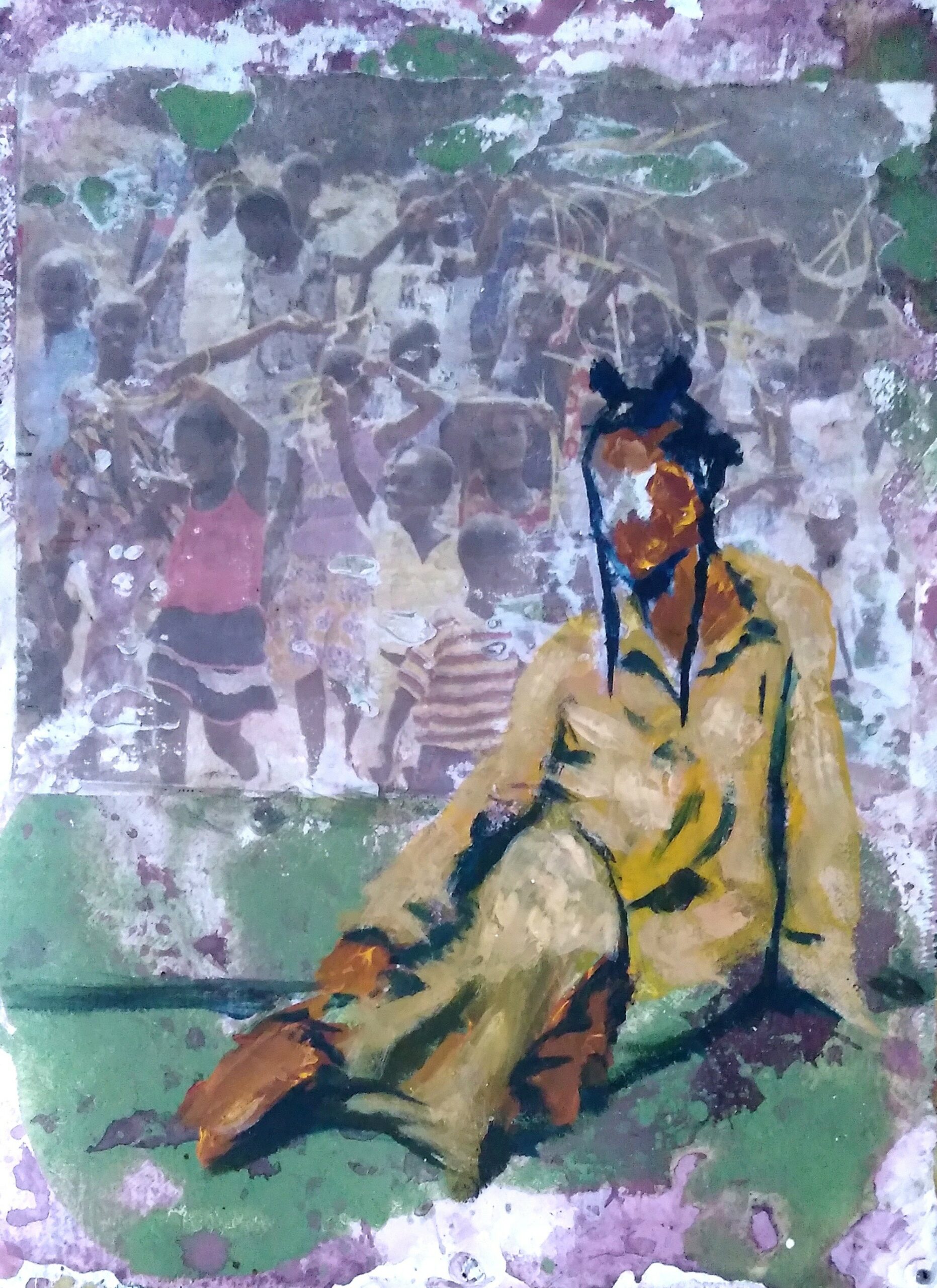
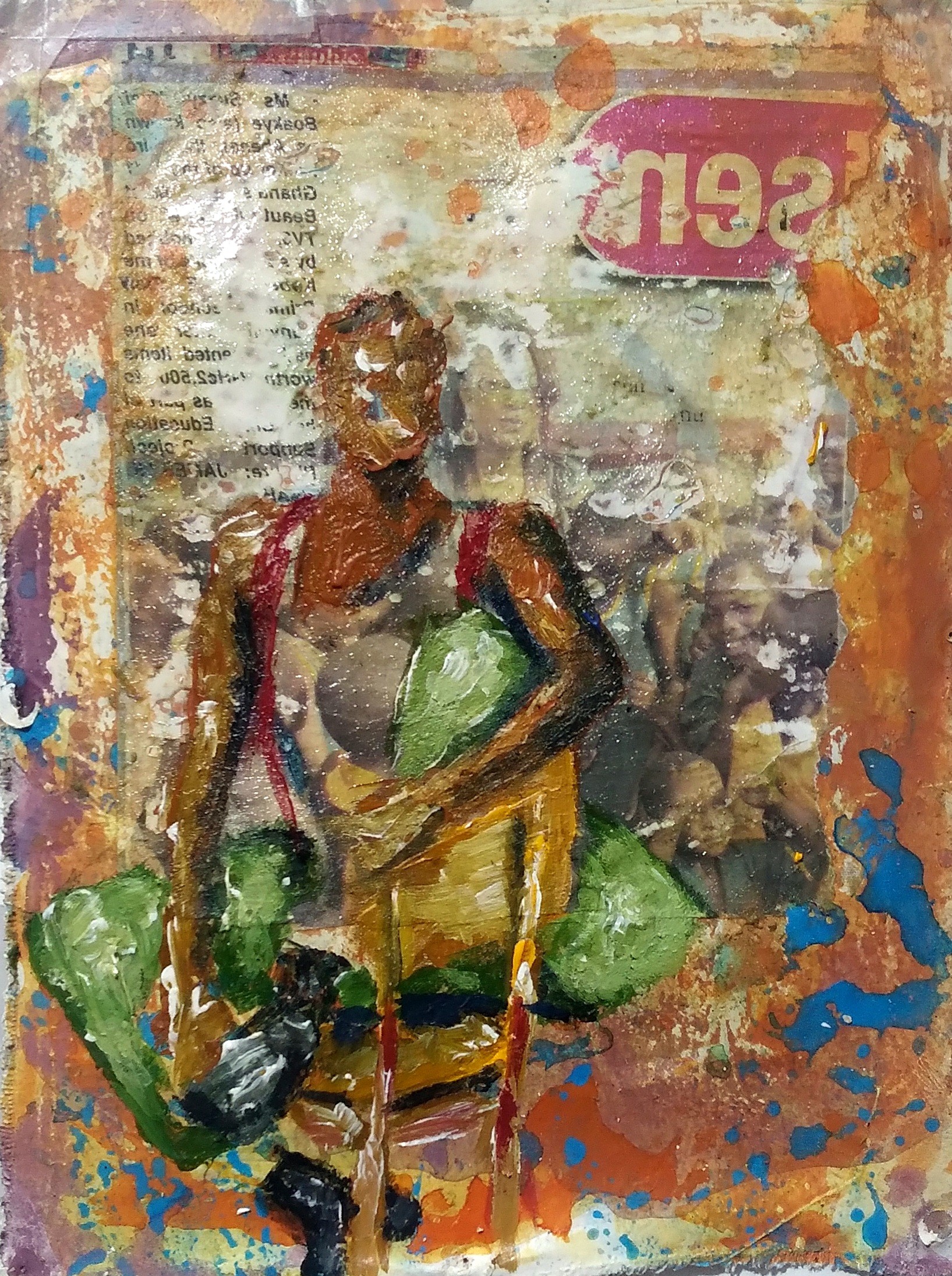
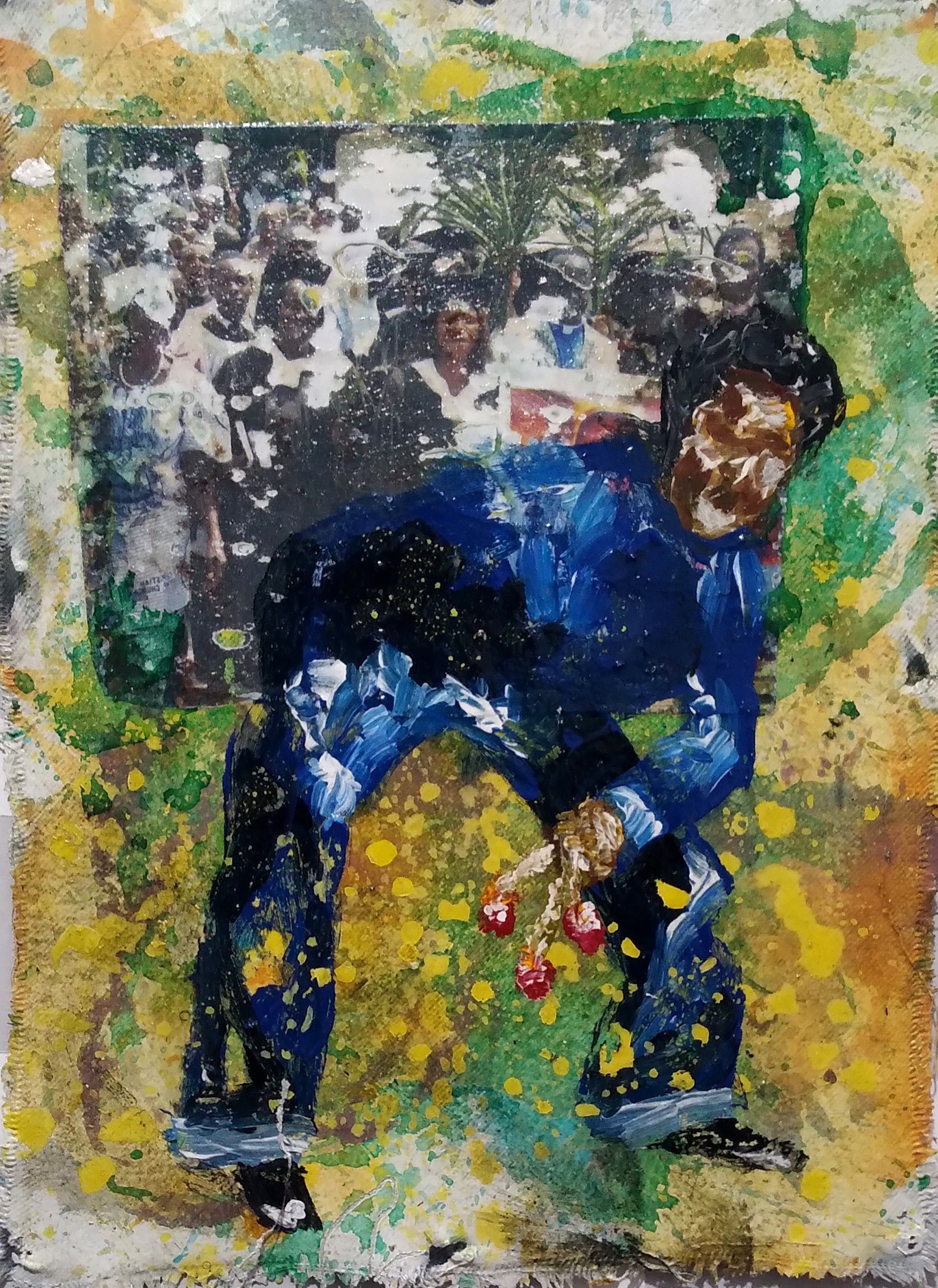
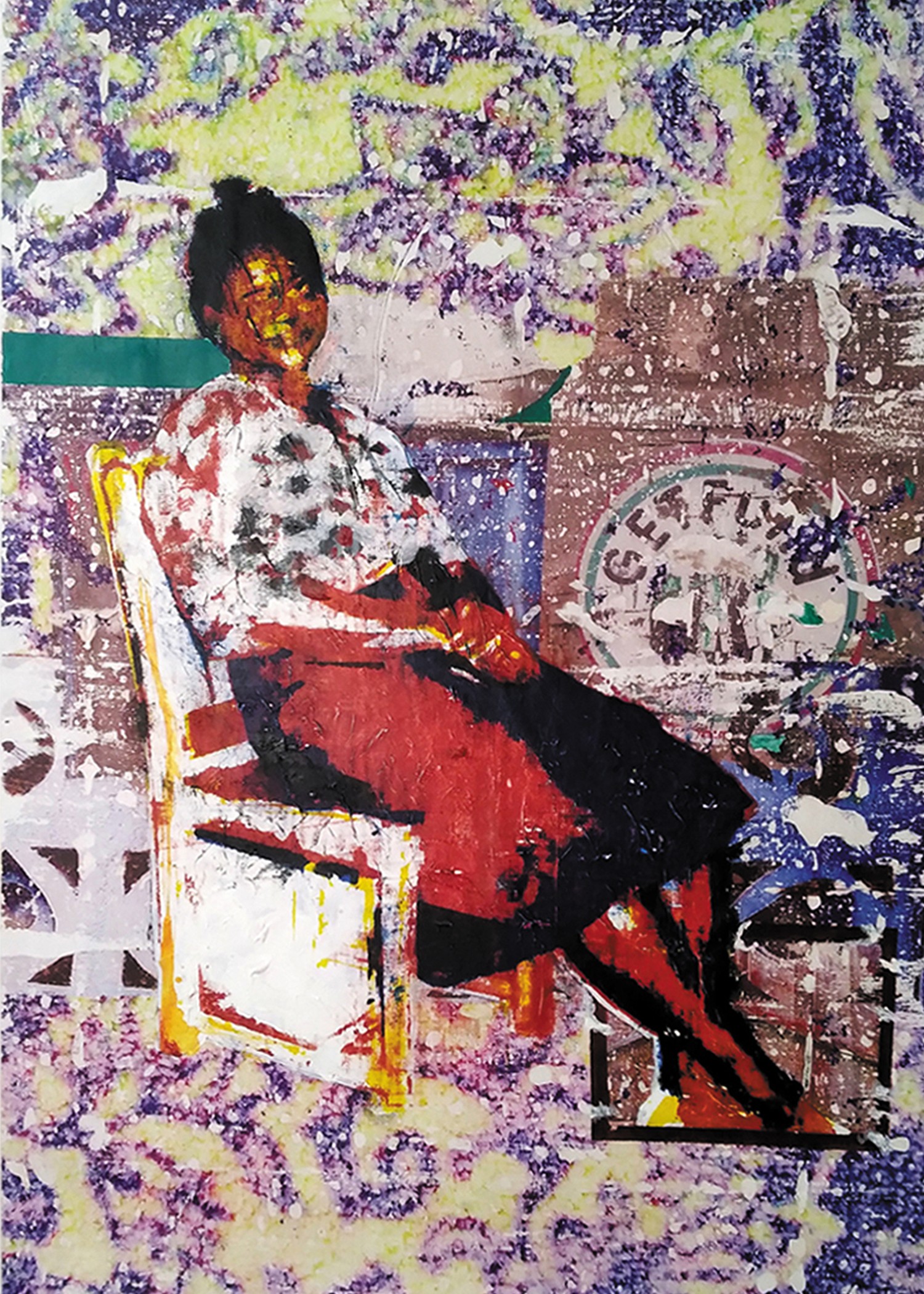
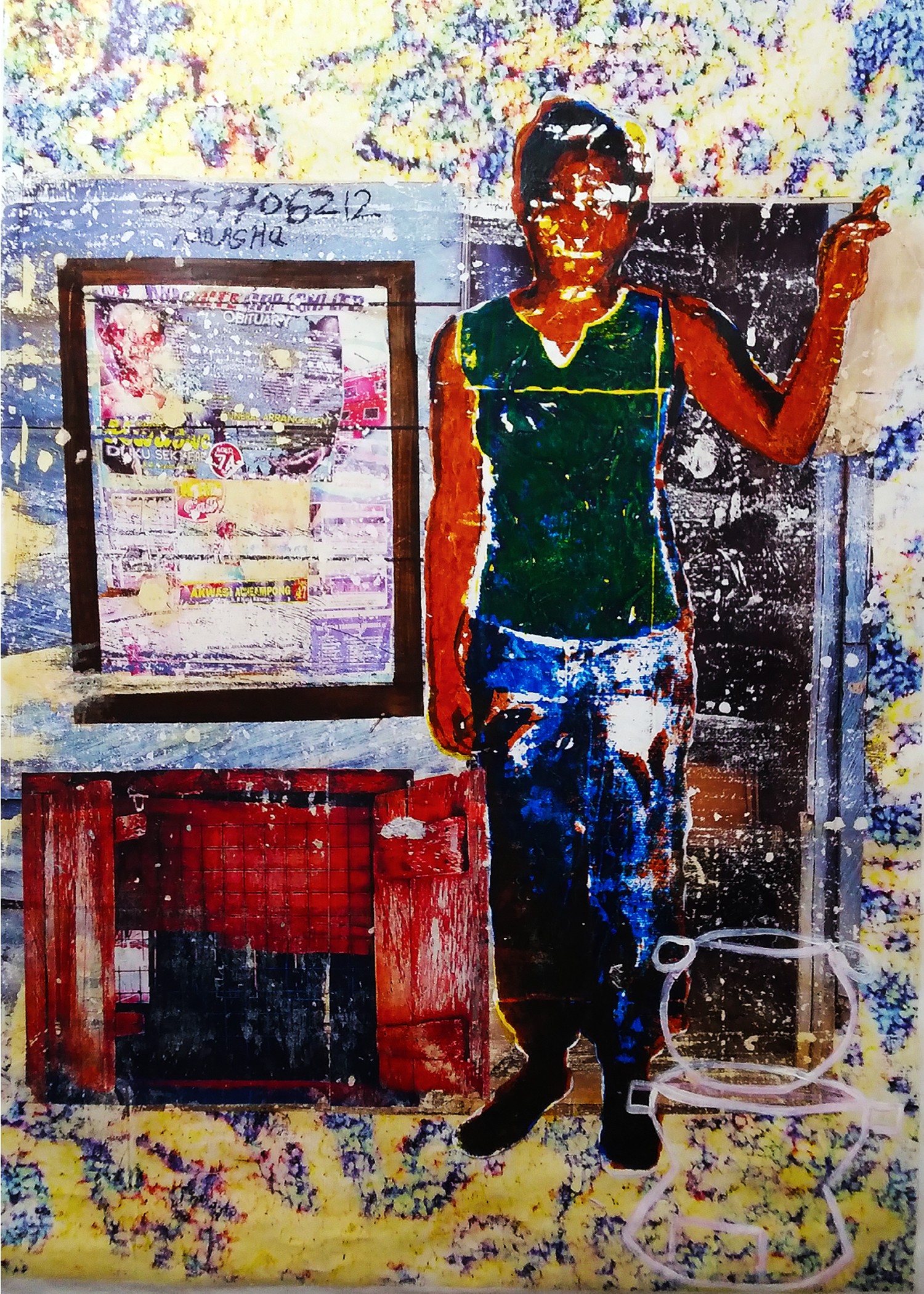
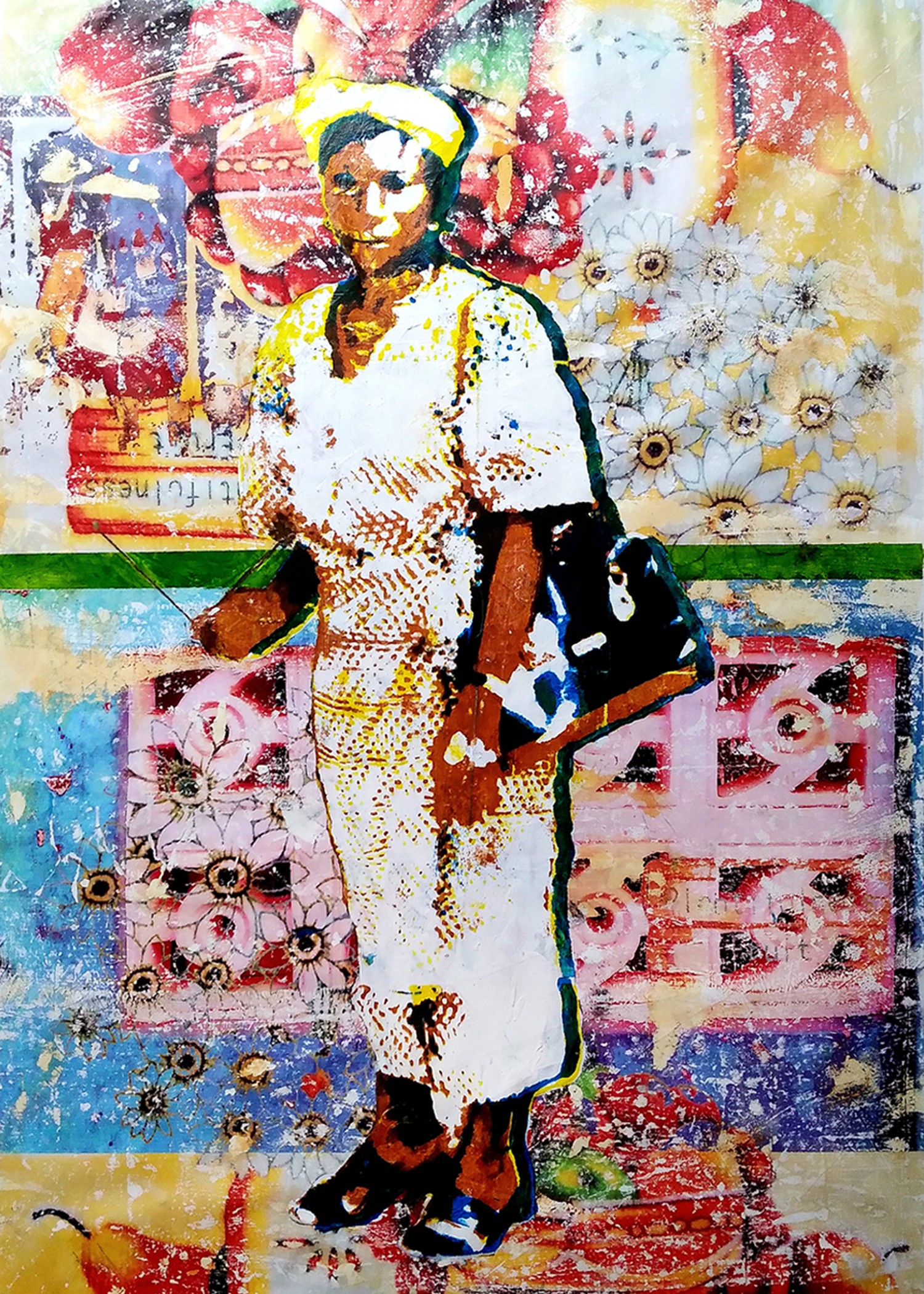
Image Credits
Michael Ansong Sarfo Kwame Baah

